by Kurt Hoehne
June 6, 2013
It seems adventure rowing is deeply engrained in the Pacific Northwest. Captain Vancouver would be proud. In addition to the the OAR Northwest crew, which recently fell just short of an Atlantic crossing (ROWBOAT CAPSIZED), we now have a crew ready to tackle the Northwest Passage, or at least the part formerly packed with ice most of the time. We wish them luck! –KH
Adventure in the melting Arctic: Vancouver-based team to row the Northwest Passage (NOT THE FULL NORTHWEST PASSAGE WHICH IS A MINIMUM OF 3,500 SEA MILES DEPENDING ON WHICH OF THE SEVEN ROUTES NAVIGATED. THE NORTHWEST PASSAGE IS BETWEEN THE PACIFIC OCEAN ARCTIC CIRCLE IN THE BERING STRAIT AND THE ATLANTIC OCEAN ARCTIC CIRCLE IN THE DAVIS STRAIT.)
By Carrie Saxifrage, the Vancouver Observer.
No one has ever attempted to row the Northwest Passage in one season before, because no one could. (HOW DID 135 VESSELS COMPLETE 185 FULL TRANSITS OF THE NORTHWEST PASSAGE IN THE LAST 107 YEARS?) It has always been blocked by summer sea ice. (UNDOUBTEDLY YOUR INFORMATION IS WRONG 185 TIMES) But the radical warming of the Arctic has changed that.
(WHERE IS YOUR DATA TO BACK SUCH A RADICAL WARMING OF THE ARCTIC? RAW TEMPERATURE DATA SUPPORTS COOLING, NOT WARMING!)
This summer four adventurers (DARE DEVIL STUNTS) hope to draw attention to the profound changes of the Canadian north by rowing the heart of the Northwest Passage, from the Inuvik on the Pacific Ocean to Pond Inlet on the Atlantic. The 3,000 km journey will take 70 to 80 days if all goes well. They have about a 90 day window until ice returns to the shallow waters at the northern edge of North America.
(INUVIK TO POND INLET IS 1,800 MILES OR 2,900 KILOMETERS DEPENDING ON THE CHOSEN ROUTE, NO WAY CLOSE TO A COMPLETE 3,500 MILE NORTHWEST PASSAGE. YOU DO NOT SAY YOU CLIMBED MOUNT EVEREST BY HIKING TO BASE CAMP. YOU MUST SUMMIT TO THE TOP ELSE YOU HAVE NOT CLIMBED MOUNT EVEREST. STARTING AND FINISH LINES ARE NOT OPEN TO PERSONAL INTERPRETATION. 135 BOATS HAVE SET THE CRITERIA BY COMPLETING 185 COMPLETE NORTHWEST PASSAGES DURING THE LAST 107 YEARS. TRAVELING BETWEEN THE HAMLETS OF INUVIK TO POND INLET IS NOT A NORTHWEST PASSAGE.)
MainStream Renewable Power is sponsoring the seasoned adventurers. Kevin Vallely set a South Pole speed record. Paul Gleeson rowed the Atlantic. Frank Wolf biked, paddled and walked the route of the Enbridge pipeline. Denis Barnett is new to major expeditions, but this is the exact kind of world class opportunity that he’s been seeking for years.
MainStream Renewable Power is sponsoring the seasoned adventurers. Kevin Vallely set a South Pole speed record. Paul Gleeson rowed the Atlantic. Frank Wolf biked, paddled and walked the route of the Enbridge pipeline. Denis Barnett is new to major expeditions, but this is the exact kind of world class opportunity that he’s been seeking for years.
(WITH SO MUCH EXPERIENCE, WHY WOULD A "SEASONED ADVENTURER" NOT USE GLOVES IN THE ARCTIC WHILE ROWING? SEE PHOTO OF PAUL FLEESON'S (?) HAND WITH SEVERE BLISTERS AFTER ONLY TWO DAYS AND 100 MILES... NO HORSE SENSE NOR SUPERVISION FROM THE OTHER "SEASONED ADVENTURERS")
Vallely takes satisfaction in the fit between the rowing expedition and the issue they hope to publicize. “There’s something beautiful about the way we can talk to climate change directly by the actions we’re doing. Very few expeditions can do that,” he said.
(PLEASE PROVIDE THE HARD FACTS - NOT REPEATING THE MEDIA CLIMATE HYPERBOLA.)
He described the publicity launch of the “Last First” at a summit on the Arctic sponsored by the Economist Magazine. The summit’s scientific panel noted that the rapid melting of Arctic ice has surprised and shocked the scientific community. Last years’ low ice conditions weren’t predicted for another thirty years. Three of the panelists said the Arctic would be ice free in summer within ten to 20 years. One panelist said it would occur in the next three years.
“That’s scary,” Vallely said, “because if that’s the case, it’s pretty profound stuff.”
He described the publicity launch of the “Last First” at a summit on the Arctic sponsored by the Economist Magazine. The summit’s scientific panel noted that the rapid melting of Arctic ice has surprised and shocked the scientific community. Last years’ low ice conditions weren’t predicted for another thirty years. Three of the panelists said the Arctic would be ice free in summer within ten to 20 years. One panelist said it would occur in the next three years.
“That’s scary,” Vallely said, “because if that’s the case, it’s pretty profound stuff.”
(HOW DO YOU EXPLAIN THE FACT THAT YOU HAVE BEEN ATTEMPTING TO ROW FOR A WEEK AND THE ARCTIC REMAINS BLOCKED WITH HEAVY SEA ICE? DID THE SEA ICE NOT MELT ON QUE OR ARE YOUR CALCULATIONS WRONG? SEE NEXT: CANADIAN ICE SERVICE MAP: http://ice-glaces.ec.gc.ca/prods/WIS56CT/20130701180000_WIS56CT_0007140378.gif)
Scientists report that an ice free Arctic Ocean triggers numerous feedback loops that will put climate change beyond human control:
The Albedo Flip: white ice reflects heat and dark water absorbs it. Loss of summer sea ice will reduce the Albedo effect from 60% reflection of heat off the Earth’s surface to 10%.
From Permafrost to Permamelt: as permanently frozen Arctic land melts, it releases massive amounts of methane and carbon dioxide, both potent green house gases.
Melting methane hydrates: as the ocean warms, tremendous amounts of methane that are frozen at the bottom of the Arctic Ocean will bubble out of the ocean and into the atmosphere, a trigger for major extinction events in the past.
Dying forests: as the north warms, the entire western boreal forest dies faster than it can grow back. It has already shifted from a CO2 absorber to a CO2 emitter in recent years.
(WHY DID DR. FREDRICK SEITZ, THE PAST PRESIDENT OF THE NATIONAL ACADEMY OF SCIENCES, U.S.A. AND PRESIDENT EMERITIUS ROCKEFELLER UNIVERSITY AND 31,000 SCIENTISTS URGE AMERICANS TO OPPOSE GLOBAL WARMING AFTER REVIEWING AND APPROVING THE SCIENTIFIC PAPER ENTITLED "ENVIRONMENTAL EFFECTS OF INCREASED ATMOSPHERIC CARBON DIOXIDE" AT http://petitionproject.org/gw_article/GWReview_OISM150.pdf. HE FURTHER STATES, THERE IS NO CONVINCING SCIENTIFIC EVIDENCE THAT HUMAN RELEASE OF CARBON DIOXIDE, METHANE, OR OTHER 'GREENHOUSE' GASES ARE CAUSING OR WILL, IN THE FORESEEABLE FUTURE, CAUSE CATASTROPHIC HEATING OF THE EARTH'S ATMOSPHERE AND DISRUPTION OF EARTH'S CLIMATE. MOREOVER, THERE IS SCIENTIFIC EVIDENCE THAT INCREASES IN ATMOSPHERIC CARBON DIOXIDE PRODUCE MANY BENEFICIAL EFFECTS UPON THE NATURAL PLANT AND ANIMAL ENVIRONMENTS OF THE EARTH.)
The Albedo Flip: white ice reflects heat and dark water absorbs it. Loss of summer sea ice will reduce the Albedo effect from 60% reflection of heat off the Earth’s surface to 10%.
From Permafrost to Permamelt: as permanently frozen Arctic land melts, it releases massive amounts of methane and carbon dioxide, both potent green house gases.
Melting methane hydrates: as the ocean warms, tremendous amounts of methane that are frozen at the bottom of the Arctic Ocean will bubble out of the ocean and into the atmosphere, a trigger for major extinction events in the past.
Dying forests: as the north warms, the entire western boreal forest dies faster than it can grow back. It has already shifted from a CO2 absorber to a CO2 emitter in recent years.
(WHY DID DR. FREDRICK SEITZ, THE PAST PRESIDENT OF THE NATIONAL ACADEMY OF SCIENCES, U.S.A. AND PRESIDENT EMERITIUS ROCKEFELLER UNIVERSITY AND 31,000 SCIENTISTS URGE AMERICANS TO OPPOSE GLOBAL WARMING AFTER REVIEWING AND APPROVING THE SCIENTIFIC PAPER ENTITLED "ENVIRONMENTAL EFFECTS OF INCREASED ATMOSPHERIC CARBON DIOXIDE" AT http://petitionproject.org/gw_article/GWReview_OISM150.pdf. HE FURTHER STATES, THERE IS NO CONVINCING SCIENTIFIC EVIDENCE THAT HUMAN RELEASE OF CARBON DIOXIDE, METHANE, OR OTHER 'GREENHOUSE' GASES ARE CAUSING OR WILL, IN THE FORESEEABLE FUTURE, CAUSE CATASTROPHIC HEATING OF THE EARTH'S ATMOSPHERE AND DISRUPTION OF EARTH'S CLIMATE. MOREOVER, THERE IS SCIENTIFIC EVIDENCE THAT INCREASES IN ATMOSPHERIC CARBON DIOXIDE PRODUCE MANY BENEFICIAL EFFECTS UPON THE NATURAL PLANT AND ANIMAL ENVIRONMENTS OF THE EARTH.)
An ice free Arctic also provides access to more fossil fuels: according to the U.S. Geological Survey, the Arctic contains about 13% of the world’s undiscovered oil, 30 percent of its undiscovered natural gas and 20 percent of its undiscovered natural gas liquids. John Higginbotham at Canada’s Centre for International Governance is calling for investment in icebreakers, deepwater ports, oil spill remediation facilities and other infrastructure along the Northwest Passage.
Iliyra
Vallely expects the adventure will provide “Iliyra” – an Inuit word that means awe combined with fear. “Like when you see a polar bear, and there is nothing between you,” Vallely explained.
Mental challenges: pain and tedium
The team will row 24/7, probably in four hour shifts, for close to three months. Physical pain and tedium are the stuff of grand adventure, and they all have different ways of coping with it.
(MIGHT I SUGGEST THE TRUTH FROM ROALD AMUNDSEN "ADVENTURE IS JUST BAD PLANNING" IN THE FIRST 100 MILES THEY ARE EXPERIENCING THE FRUITS OF THEIR PLANNING.)
Wolf finds that it helps to stay in the moment. “If you are looking ahead, then you’re probably not enjoying everything as you pass by it.” Filming will keep him busy.
Wolf finds that it helps to stay in the moment. “If you are looking ahead, then you’re probably not enjoying everything as you pass by it.” Filming will keep him busy.
(FRANK WOLF IS PLANNING TO EITHER SELL HIS VIDEO FOOTAGE AS AN ADVENTURE MOVIE... ELSE SHOP IT WHILE MAKING THE PUBLIC SHOWINGS ON THE LECTURE TOUR. HE STANDS TO GAIN A GOOD RETURN ON HIS MINIMAL PERSONAL INVESTMENT OF ONLY HIS TIME. A FREE PAID VACATION TO GO ROW IN THE ARCTIC, HOW COULD ANYONE IN THEIR RIGHT MIND SAY NO TO THAT STUNT?)
Vallely coped with the mental challenge of his previous expeditions with sheer perseverance. “You suffer a lot,” he said. “You kind of curse yourself. You’re out there in the middle of nowhere. So you just tell yourself to get through the day. Inevitably, you feel better — you always do. You go to these really low places but the ups are so high they get you through the lows.”
Vallely coped with the mental challenge of his previous expeditions with sheer perseverance. “You suffer a lot,” he said. “You kind of curse yourself. You’re out there in the middle of nowhere. So you just tell yourself to get through the day. Inevitably, you feel better — you always do. You go to these really low places but the ups are so high they get you through the lows.”
(LETS SEE - IT WOULD BE FUN TO BE A MOUSE IN THE CORNER - CATCHING ALL OF THE FIRST WEEK'S RANTS AND RAVES... I'M SURE MOST WOULD NEED TO BE "BEEPED' OUT IF AIRED ON PUBLIC BROADCASTING.... LOL)
While rowing the Atlantic, Gleeson and his rowing partner gave each other letters they had received from family and friends for this purpose. When one of them hit a low point, the other would pull out a letter that would cheer them up. “Mental preparation comes through the training and the struggles we’ve gone through to put the whole thing together,” Gleeson said.
Logistics: boat transport, food, water, storms, electricity, ice,
The adventure starts by towing the boat, named The Arctic Joule, from Vancouver to Inuvut, a 4,000 km journey mostly on bare roads. “That trip will be epic in itself,” Gleeson commented.
They will eat high calorie freeze dried food, hopefully supplemented by fresh fish and a resupply at Cambridge Bay, Nunavut, an Inukititut hamlet of 1,500 people.
They will carry two desalinizing systems. The silty Arctic waters are hard on such systems, so they are prepared to use river water if need be. Their water storage capacity is 80 litres, enough for about four days.
The team will have iPods, laptops and two satellite phones. Solar panels on the roofs of the two small cabins will charge two car batteries to service their electrical needs.
While rowing the Atlantic, Gleeson and his rowing partner gave each other letters they had received from family and friends for this purpose. When one of them hit a low point, the other would pull out a letter that would cheer them up. “Mental preparation comes through the training and the struggles we’ve gone through to put the whole thing together,” Gleeson said.
Logistics: boat transport, food, water, storms, electricity, ice,
The adventure starts by towing the boat, named The Arctic Joule, from Vancouver to Inuvut, a 4,000 km journey mostly on bare roads. “That trip will be epic in itself,” Gleeson commented.
They will eat high calorie freeze dried food, hopefully supplemented by fresh fish and a resupply at Cambridge Bay, Nunavut, an Inukititut hamlet of 1,500 people.
They will carry two desalinizing systems. The silty Arctic waters are hard on such systems, so they are prepared to use river water if need be. Their water storage capacity is 80 litres, enough for about four days.
The team will have iPods, laptops and two satellite phones. Solar panels on the roofs of the two small cabins will charge two car batteries to service their electrical needs.
(BOYS AND THEIR TOYS... I WONDER WHAT AMUNDSEN USED FOR DISTRACTION DURING HIS 3 YEAR EXPEDITION? MANY OF THE HISTORY BOOKS AND DIARIES SAY HE "THOROUGHLY ENJOYED HIMSELF" AND ALLOWED HIS CREW TO DO THE SAME DURING THE HARSH WINTERS SPENT LIVING IN THE NATIVE INUIT CAMPS. TODAY INUITS IN GJOA HAVEN HAVE COME FORWARD CLAIMING NORWEGIAN "GENES" FROM AMUNDSEN - NO DNA PROOF HAS BEEN MADE PUBLIC.)
The rowing team will need cooperative weather to achieve their goal. “Mother Nature will call the shots,” Gleeson commented. He expects the worst storm action in the western Arctic at the start of the journey because that area is most exposed to the open sea. In the Atlantic, Gleeson rowed through 45 foot rolling waves. He expects storm waves in the Arctic to be steeper and choppier. The cabins will have rails to hang on to. The boat will self-right if it rolls. The team will carry survival suits and a life raft.
The rowing team will need cooperative weather to achieve their goal. “Mother Nature will call the shots,” Gleeson commented. He expects the worst storm action in the western Arctic at the start of the journey because that area is most exposed to the open sea. In the Atlantic, Gleeson rowed through 45 foot rolling waves. He expects storm waves in the Arctic to be steeper and choppier. The cabins will have rails to hang on to. The boat will self-right if it rolls. The team will carry survival suits and a life raft.
(THE ARCTIC JOULE FAILED ITS CAPSIZING TEST - THE VIDEO MUST HAVE BEEN EDITED BY MAINSTREAM WEBMASTERS WHO ARE IN CONTROL OF THE WEBSITE WHILE THE LADS ARE ROWING. NOTE THE FAILED PORTION IN THE MIDDLE HAS BEEN REMOVED WITH THE ENDING SPLICED ON - NOTICE THE JUMP FROM THE MIDDLE TO THE END. THE VIDEO IS LOCATED AT http://vimeo.com/65757435 . AS OF JULY 10TH THE VIDEO HAS BEEN RETURNED TO IT UNEDITED STATUS - SO WHEN YOU WATCH NOTE THE LIFTING STRAP BEING PULLED WHEN THE ROWBOAT IN UPSIDE DOWN TO FORCE IT TO ROLL OVER... WHO IS GOING TO BE PULLING IT OVER IN THE ARCTIC - THAT IS A POOR DESIGNED OCEAN ROWBOAT IN MY OPINION. AND I SURELY WOULD NOT BE GOING TO THE ARCTIC IN AN UN-SEAWORTHY BOAT. THAT IS A CRIME WAITING TO HAPPEN. HOW COULD ANYONE PUT SOMEONE'S LIFE AT RISK FOR A DARE DEVIL STUNT? SUPPORT FROM MAINSTREAM'S GENEROUS $250,000 M-O-N-E-Y? EVERYONE HAS A PRICE.)
“We could batten down the hatches if we had to,” Gleeson said, “Or we could beach it. We’ll always be close to land. If we’re in rough weather and we’re still making forward progress, that’ll work too.”
The boat was designed with a fatter hull to pop up on ice. If the Northwest Passage ices over before they complete their journey, the slightly rounded keel would allow them to drag it across the ice using pulleys. “That would not be the ideal scenario,” Gleeson said.
(COME ON LADS - BLAME EVERYTHING THAT HAPPENS ON GLOBAL WARMING - DOES MOTHER NATURE HAVE SOMETHING TO DO WITH ROWING IN THE ARCTIC... OR DOES SHE? ITS BECAUSE OF THE WINDS... TOO MUCH SUNLIGHT... WE ATE ALL OF THE FOOD AND RAN OUT OF DRINKING WATER... YOU CAN BET THEY WILL HAVE PLENTY OF REASONS AND "ADVENTURES" TO RELATE... AND YOU CAN BET THEY PLAN TO TAKE IT ALL TO THE BANK.... JUST WATCH THEM TURN "STUPID" AND "DARE DEVIL" INTO M-O-N-E-Y BECAUSE YOU, THE PUBLIC ENJOYS SEEING SOMETHING LIKE "JACKASS" TV.)
Orignal post here.
Other links:
Expedition Website
Expedition Tracker
Orignal post here.
Other links:
Expedition Website
Expedition Tracker
CLIMATE CHANGE - GLOBAL WARMING UPDATES
http://stevengoddard.wordpress.com/2013/07/10/100th-anniversary-of-the-hottest-day-on-earth/
100th Anniversary Of The Hottest Day On Earth
July 10th, 1913 reached 134F in California, the hottest shade temperature ever recorded on Earth. That week was also the hottest week ever recorded on Earth.
After much data tampering, crack scientists at NASA now tell us that record hot July, 1913 was globally the coldest July in the last 100 years.
It makes perfect sense to the temperature fraud community that the hottest week occurred during the coldest month.
According to USHCN records, Meeker Oklahoma had their hottest August on record in 1913, five degrees hotter than 2011.
Meeker Oklahoma USHCN Temperatures Month Year Average Max Mean Average Min August 1913 106.4 89.5 72.2 August 1936 105.8 90.1 73.7 July 2011 101.9 89.0 75.6
As you would expect, the GISS data tampering experts show that record hot August, 1913 was globally the coldest August in the last 100 years – despite the all-time record heat.
1913 was also the year when the impossibly brilliant father of global warming predicted that we would be farming Greenland and Antarctica.

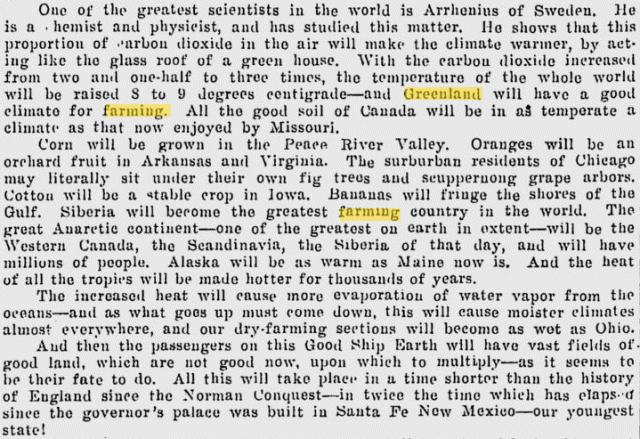
Despite all the all-time record heat and safe CO2 levels during the official NASA coldest year of the century, thousands of people drowned in floods in the US.
James Hansen also tells us that very hot weather is almost impossible with CO2 below 350 ppm.
Government Experts : 10,000,000 km² Of Ice To Melt In The Next Few Weeks
AND LETS TRY TO PUT A SMILE ON YOUR FACE FOR THE REST OF THE DAY WITH SOME HUMOR... THIS SURE BEATS ROWING IN THE COLD ARCTIC WITH BLISTERED HANDS...
Hansen Says That We Have To Get Rid Of All Carbon By 2030 To Save The Planet
Some people are up front on this issue, and are already replacing their carbon with silicone.
Half Way Through The North Pole Melt Season – Still The Coldest Summer On Record
The sun is getting lower in the sky now, and temperatures near the North Pole have been record cold this summer.

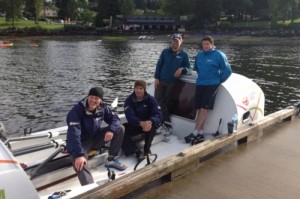


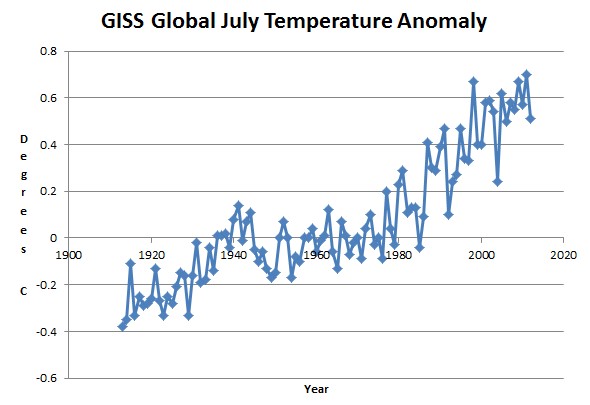

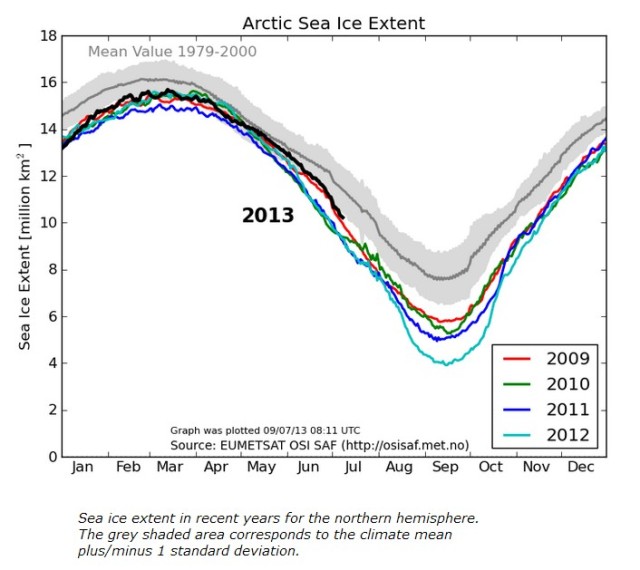
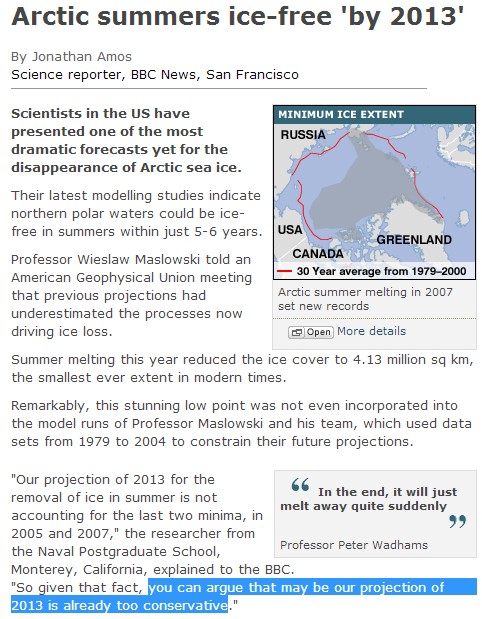


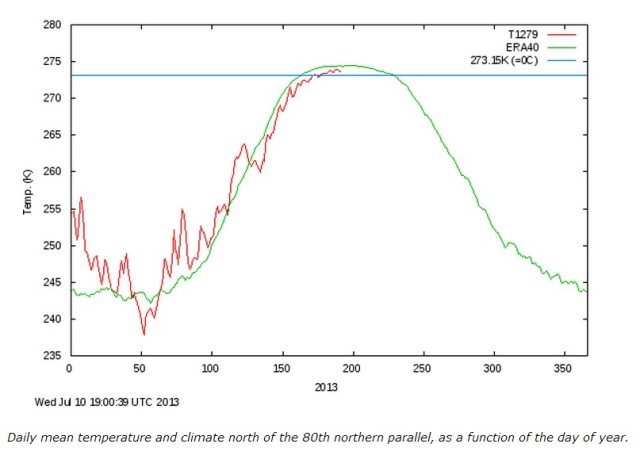
1 comment:
Spot on with this write-up, I absolutely feel
this web site needs far more attention. I'll probably be returning
to see more, thanks for the advice!
Look into my site Website
Post a Comment
Enter your comment(s) here...